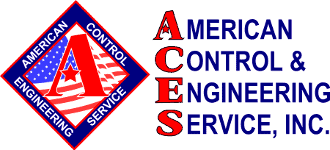Metrology Services
For over 20 years American Control and Engineering Service Inc. (ACES) has provided metrology testing.
What is metrology?
Pyrometric requirements for equipment used for the thermal processing of parts and raw materials, such as temperature sensors, instrumentation, thermal processing equipment, system accuracy tests, and temperature uniformity surveys. These are necessary to ensure that parts or raw materials are heat treated in accordance with applicable specification(s).
- Referenced from AMS2750 rev G, section 1.1.
- Definition from Oxford Languages: the scientific study of measurement.
- Thermal processing equipment– term used to refer to any vessel (such as autoclave, furnace, oven, quench and refrigeration equipment, liquid bath, heated press, etc.) used to process parts or raw materials at controlled temperatures
- Thermal processing– any process in which parts or raw material are exposed to controlled heating, soaking, or cooling to achieve the specified properties or condition of the parts or raw material.
Testing Services – (TUS, SAT, and Calibrations) Performance is key to running an efficient operation. ACES provides various testing services to help keep their customers’ systems running at their optimum levels while maintaining compliance with regulatory and industry quality standards.
TUS – Temperature Uniformity Survey is a test or series of tests where calibrated field test instrumentation and sensors are used to measure temperature variation within the qualified furnace work zone before and after thermal stabilization. Prior to the first use of a furnace, an initial TUS is performed to determine the qualified work zone.
SAT- System Accuracy Test, commonly referred to as an SAT, is another critically important and often required test. System Accuracy Tests are performed to determine the error within the temperature control system (temperature control device/lead wire/thermocouple).
Calibration – metrology calibration is the comparison of measurement values delivered by a device under test with those of a calibration standard of known accuracy. Such a standard could be another measurement device of known accuracy, a device generating the quantity to be measured. Strictly speaking, the term “calibration” occurs when an adjustment is made to device under test (DUT) to make it agree with the standard. The calibration process incorporates the measurement deviations of the standards and the DUT to obtain the best available accuracy for the system. The calibration standard is normally traceable to a national or international standard held by a metrology body.
- Trained to meet SAE AMS 2750 standards
- Practicing NADCAP, and aerospace industry standards
- Flexible to meet any national or internal standards
- TUS and SAT Testing
- Instrument Calibrations
- Expertise to troubleshoot and solve problems
- Should the TUS fail, ACEScan fix the problem and without having to schedule a time to come back.
- Regular testing and maintenance schedules
- Detailed signed Certificates of Acceptance
